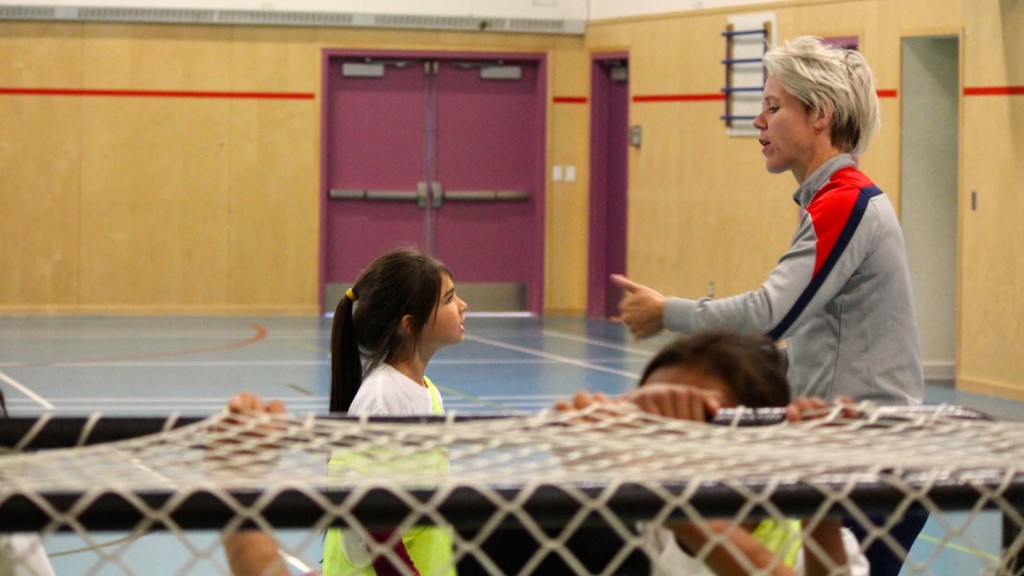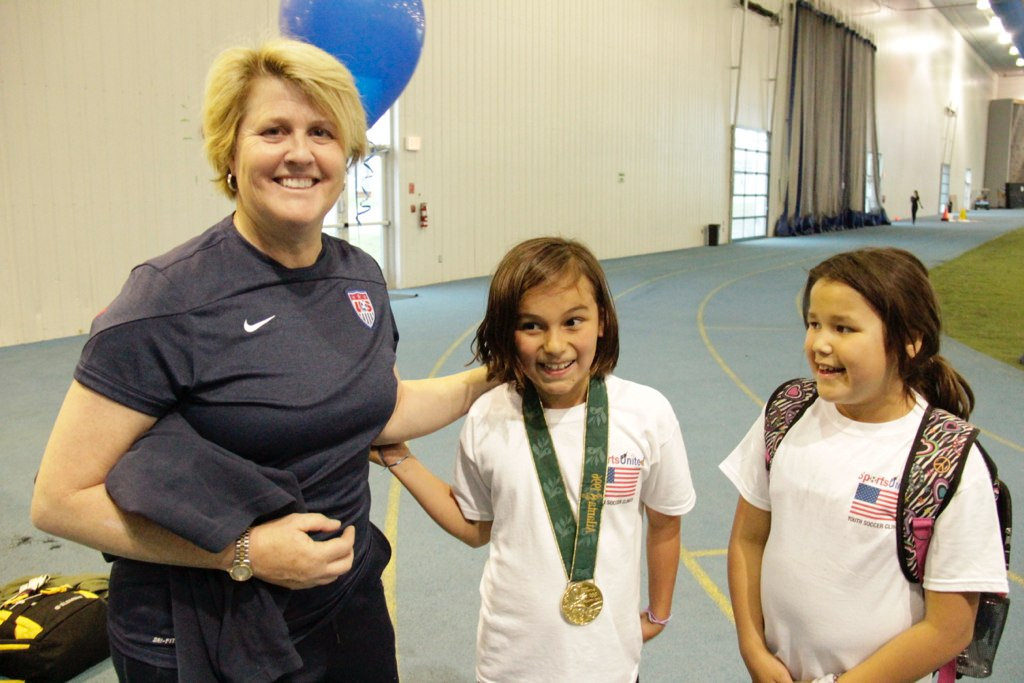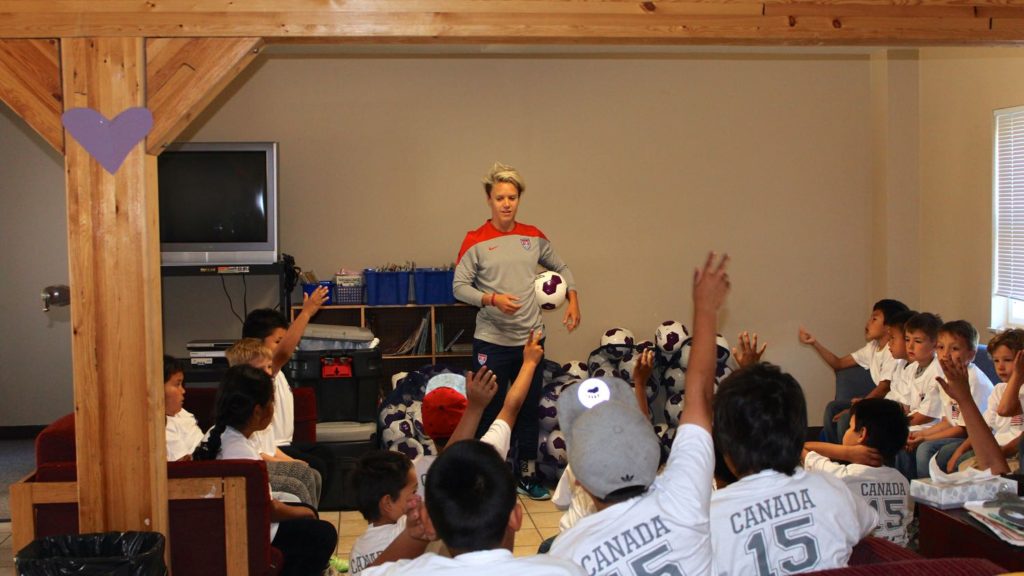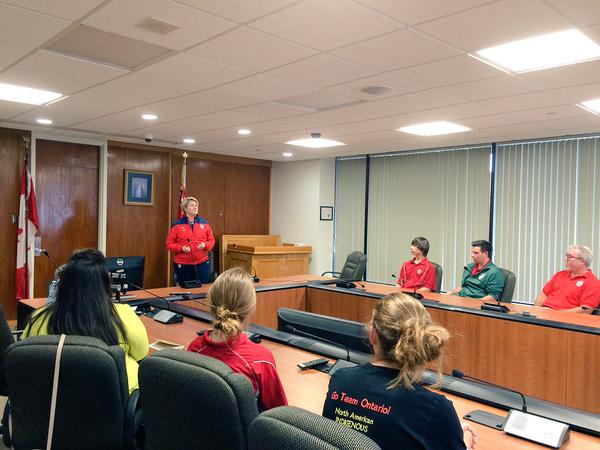Using soccer to serve: Former USWNT players visit Canada as Sports Envoys
By Brian Canever July 21, 2015While the United States women’s national soccer team was focused on winning a historic third Women’s World Cup (WWC) trophy on the field in Canada, two former USWNT players were busy on the ground promoting soccer among Aboriginal Canadians.
Mary Harvey, a goalkeeper at the first WWC in 1991, and Lori Lindsey, who appeared in the 2011 tournament, were in various regions of the country from June 15 to 27 as Sports Envoys commissioned by the U.S. Department of State SportsUnited division.
“Whether it’s aboriginal communities in Canada or urban youth in Paris and Brazil, the sport of soccer is bringing everyone together,” said Lindsey, a veteran of 31 caps with the Stars & Stripes. “Just to see how sport can bring different cultures onto the same page, it was a very exciting opportunity for me.“
Lindsey arrived in Canada five days before Harvey and spent her first three days in Vancouver hosting clinics for girls from MacDonald Elementary School, Britannia Elementary School, and Britannia Secondary, focusing on the aboriginal population there. She then traveled more than 1,400 miles north to Yellowknife, capital city of the Northwest Territories, and the smaller communities of Fort Providence and Behchoko outside of the city, where she hosted several more clinics.
According to official census data from 2011, Aboriginal Canadians make up 4.3 percent of the country’s population (1.4 million people). In the Northwest Territories, indigenous groups make up half the population: 31 percent First Nations, 10 percent Métis, eight percent Inuit, and less than one percent from other groups.
Many Aboriginal Canadians experience harsh conditions daily, brought on by poverty and discrimination. A United Nations report from July 2014 found “the well-being gap between aboriginal and non-aboriginal people in Canada has not narrowed over the past several years,” and that indigenous women and girls are especially vulnerable to abuse. According to the report, significant distrust exists among indigenous peoples towards the government at both federal and provincial levels.
Lindsey witnessed these circumstances first-hand, but was glad to be a part of government-supported efforts to make a constructive impact in the lives of indigenous girls; even if many of these girls lacked a clear understanding of soccer and the importance of the WWC happening in their country.

Lori Lindsey sharing advice with a girl during a clinic in Fort Providence. Courtesy of U.S. Consulate Calgary
“Sometimes, the girls thought I was actually Megan Rapinoe, and some people thought I was Sophie Schmidt from the Canada team,” Lindsey laughs. “In some of the smaller communities, I don’t know that they grasped what me being on the women’s national team was like, they were just excited to have somebody there.”
Lindsey brought a clear message to the girls: “Whether you play sports at a high level or not, that’s not the point. Just to live a healthy life, full of confidence, and to stand up for what’s right in whichever path you go down in the future, that’s what really matters.”
Harvey, who was in Thunder Bay, Armstrong and McGill University in Montreal from June 20 to 27, worked with approximately 1000 girls in skills clinics, giving presentations and listening to participants describe their experiences in sports. It was her third time as a Sports Envoy, after partnering with the U.S. DOS for international trips to Iraq and Jordan in 2013 and 2014, respectively.
“Canada is no stranger to women’s soccer,” Harvey said. “They’ve developed women’s soccer programs throughout the country. This project was more in line with reaching out to groups where access to organized soccer isn’t quite as developed. It was an opportunity to reach some groups that haven’t been as exposed.”
Formerly a director in development at FIFA headquarters in Switzerland, and CEO of the Women’s Professional Soccer (WPS) in the United States, Harvey has long been involved with expanding soccer’s global footprint. As a veteran of the first-ever WWC, she also has seen how quickly things can progress over the course of 20 years.
“Some of these girls I worked with would look at what the U.S. has achieved in women’s soccer and believe they could never do it,” Harvey said. “Being one of the old guard, allows me the perspective to demystify it. ‘Let me describe what things were like in 1985, and show that it is achievable.’ And then they can really believe they have some control in changing things.”
Harvey shared stories from her playing career with the girls. She talked about how sport taught her the importance of bouncing back from moments of adversity. In the 1991 WWC Final, Harvey committed a costly mistake that led Norway to tie the game. In the second half, however, she came out determined and turned the U.S. goal into a fortress as her team won.
“In life, it’s inevitable that mistakes happen,” Harvey told the girls. “But know that even though it’s bad and your afraid of the consequences, you’re learning something important and valuable that will help you in life.”

Mary Harvey lets two girls at a clinic try on her gold medal from the 1996 Olympics. Courtesy of U.S. Embassy Canada
At lunch after one of her sessions at McGill University, Harvey spoke with several of the teachers from one of the after-school programs, and was delighted to receive encouraging feedback that her words really were making an impact.
“The teachers were blown away by how engaged the girls were and how they took it all in,” Harvey said. “They didn’t even think the girls liked soccer based on previous experiences: ‘I’ve never seen them light up like this around sports activities that we do,’ they told me.”


